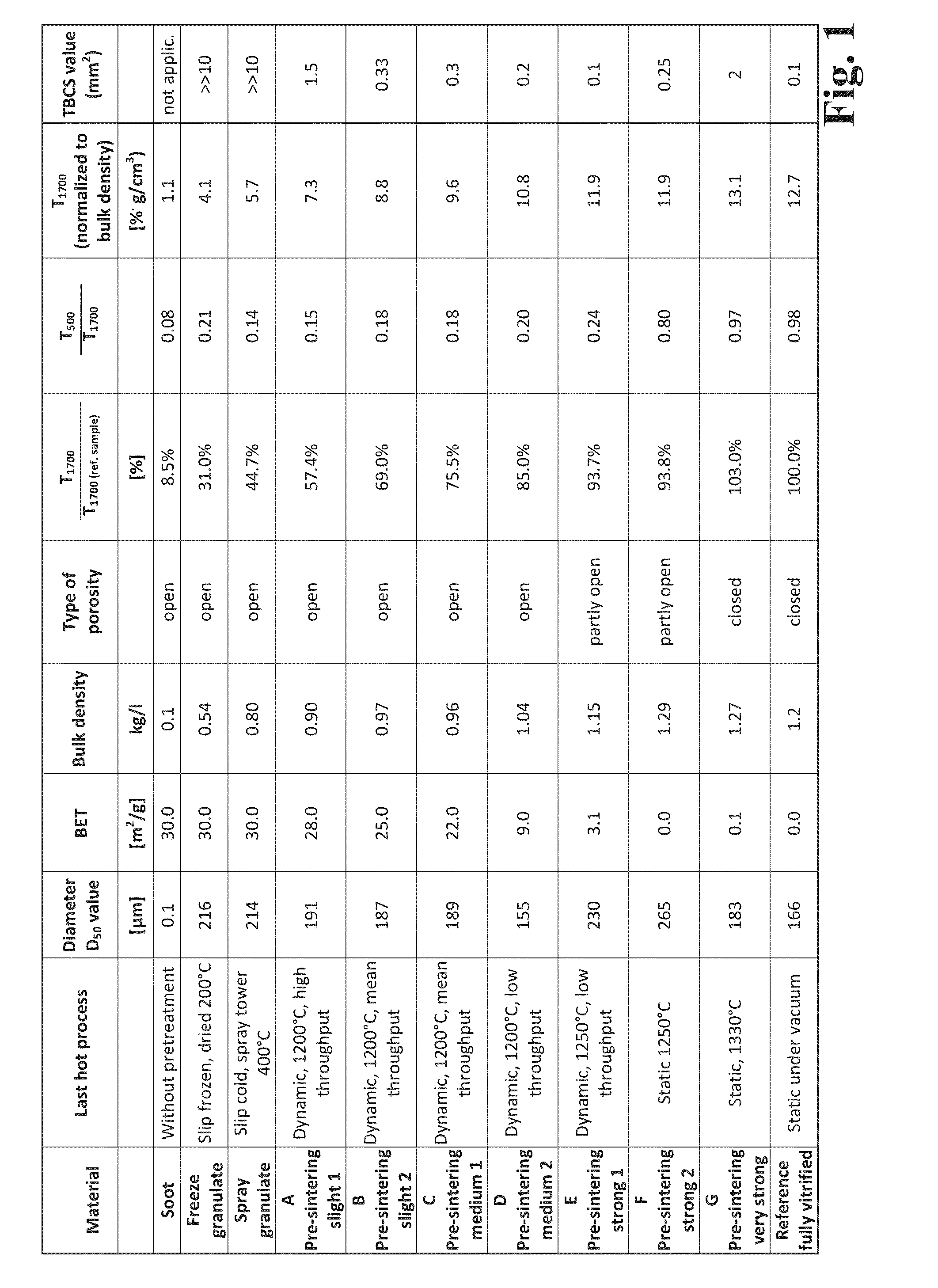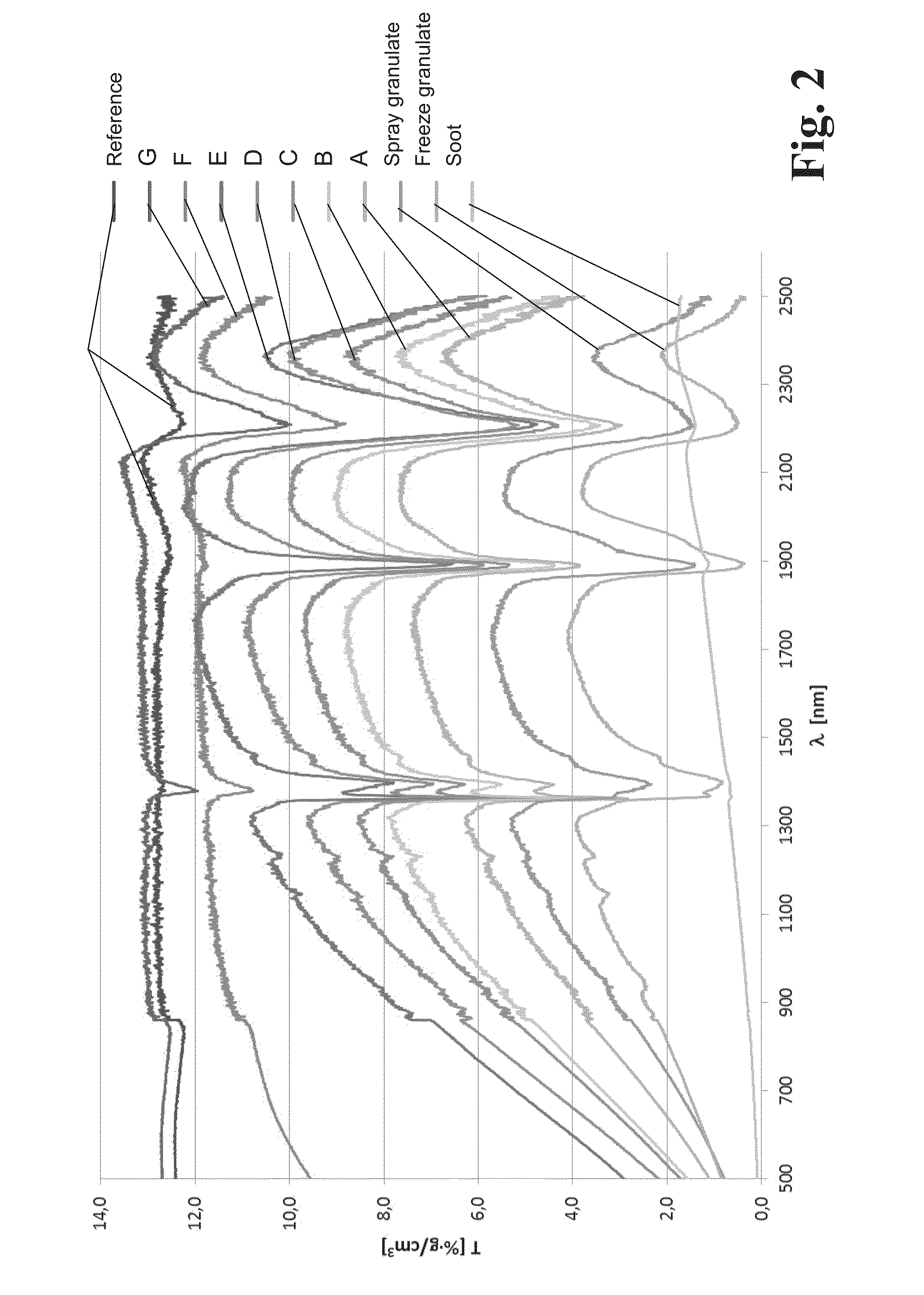Method for producing synthetic quartz glass of sio2 granulate and sio2 granulate suited therefor
a technology of synthetic quartz glass and sio2 granulate, which is applied in the direction of manufacturing tools, silicon oxides, silicon compounds, etc., can solve the problems of affecting the fusion of quartz glass, affecting the fusion speed of quartz glass, etc., and achieves the effect of inexpensive production
- Summary
- Abstract
- Description
- Claims
- Application Information
AI Technical Summary
Benefits of technology
Problems solved by technology
Method used
Image
Examples
Embodiment Construction
[0036]In the processing of initially porous SiO2 granulate into transparent quartz glass, a distinction can be made between hot treatment steps which are less complicated in terms of time, energy, and material, and those in which complicated measures have to be taken for achieving the desired absence of bubbles, e.g., evacuation measures at a high temperature. The method according to the invention aims at reducing the share of the complicated hot treatment steps in favor of less complicated ones. To achieve this aim, the following measures are taken.
[0037]The pre-production of fully vitrified quartz glass granules which is standard for producing high-quality transparent quartz glass is avoided. As a consequence, the efforts entailed by this intermediate step in terms of time, energy, and material are also not required. Instead, a still porous SiO2 granulate which can be produced with less effort is provided for the melting process. Normally, however, porous granulate cannot be proce...
PUM
| Property | Measurement | Unit |
|---|---|---|
| Temperature | aaaaa | aaaaa |
| Length | aaaaa | aaaaa |
| Fraction | aaaaa | aaaaa |
Abstract
Description
Claims
Application Information
 Login to View More
Login to View More - R&D
- Intellectual Property
- Life Sciences
- Materials
- Tech Scout
- Unparalleled Data Quality
- Higher Quality Content
- 60% Fewer Hallucinations
Browse by: Latest US Patents, China's latest patents, Technical Efficacy Thesaurus, Application Domain, Technology Topic, Popular Technical Reports.
© 2025 PatSnap. All rights reserved.Legal|Privacy policy|Modern Slavery Act Transparency Statement|Sitemap|About US| Contact US: help@patsnap.com



